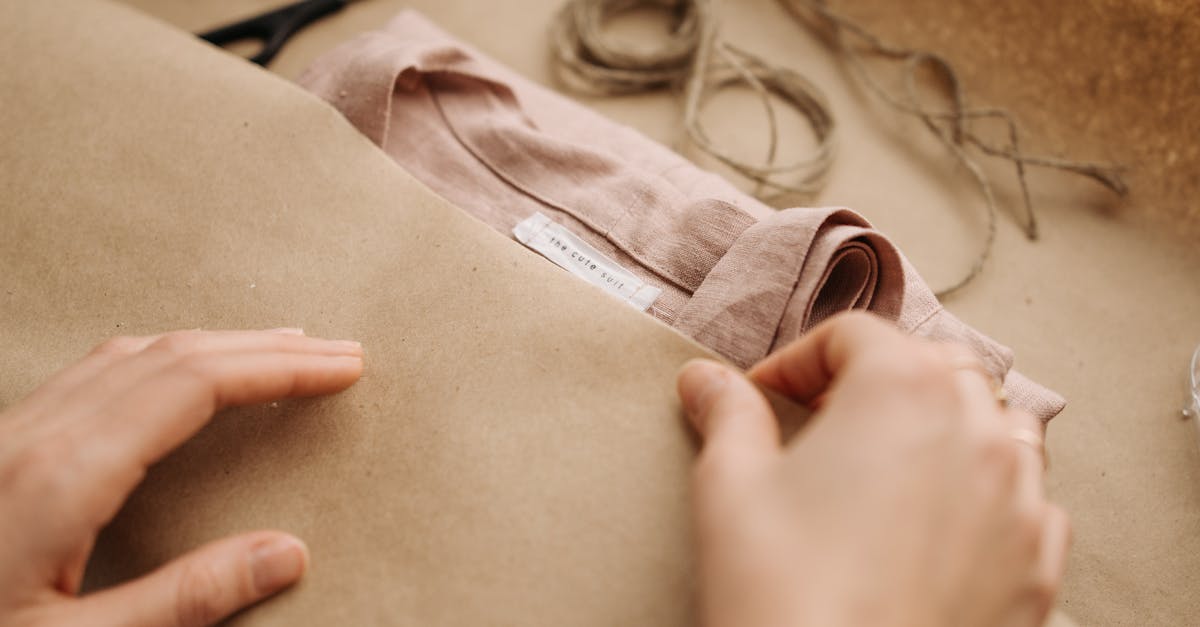Embracing Sustainable Style The Mindful Fashion Journal
Introduction to Mindful Fashion
Fashion is more than just clothing; it is a reflection of culture, identity, and values. In recent years, the fashion industry has come under scrutiny for its environmental impact and ethical concerns. This shift has given rise to the concept of 'mindful fashion,' which emphasizes sustainability, ethical production, and thoughtful consumption. In 2024, consumers are becoming increasingly aware of the importance of sustainable practices within the fashion industry. This mindfulness approach affects not just what we wear but how we perceive fashion as a whole. With growing awareness, a new breed of informed consumers is pushing for change within the industry.
Advertisement
Sustainable Fabrics and Materials
One of the cornerstones of mindful fashion is the use of sustainable fabrics and materials. Traditional textiles like cotton and polyester can have detrimental environmental effects, from water consumption to pollution. In response, designers and manufacturers are exploring innovative fabrics like bamboo, hemp, and recycled materials. These alternatives not only reduce environmental impact but also inspire creative design approaches. Additionally, advancements in biotechnology have introduced lab-grown textiles and biodegradable materials, pushing the boundaries of sustainable fashion. By choosing these eco-friendly options, consumers contribute to a more sustainable fashion ecosystem.
Advertisement
Ethical Production Practices
Mindful fashion extends beyond the garments themselves, encompassing the conditions in which clothes are made. Ethical production practices prioritize fair wages, safe working conditions, and workers' rights. Brands dedicated to mindful fashion often engage in transparent communication about their manufacturing processes and labor practices. This ethical commitment promotes a culture of accountability, inspiring consumers to make informed choices. Such practices also foster long-term partnerships with local artisans and communities, ensuring that the cultural heritage of craftsmanship is preserved. Consumers are increasingly supporting brands that align with these ethical values, driving a shift towards more responsible fashion production.
Advertisement
The Rise of Slow Fashion
In contrast to the rapid turnover of fast fashion, slow fashion embraces a more deliberate approach to clothing. This movement advocates for quality over quantity, encouraging consumers to invest in timeless pieces that withstand trends and time. Slow fashion emphasizes mindful consumption by discouraging excessive purchasing, thereby reducing waste. Designers within this movement focus on craftsmanship and durability, often creating customizable garments that adapt to various styles. By supporting slow fashion, consumers celebrate the artistry of clothing and contribute to reducing the overall environmental footprint of the industry. This shift signifies a cultural change towards more sustainable consumer habits.
Advertisement
Consumer Empowerment and Informed Choices
Mindful fashion empowers consumers with the knowledge of their clothing's impact on the environment and society. With increased access to information, consumers are making more conscious purchasing choices. Platforms providing transparency about garment lifecycle and environmental impact have emerged, allowing consumers to align their values with their wardrobe. Social media campaigns and educational initiatives have further amplified this message, encouraging individuals to question the origins of their clothing. The informed consumer is a driving force for change, urging brands to adopt sustainable practices and transforming the industry landscape. This empowerment fosters a sense of responsibility and connection to the fashion choices they make.
Advertisement
The Role of Technology in Sustainable Fashion
Technology plays a crucial role in advancing sustainable practices within the fashion industry. Innovations in digital design, virtual fitting, and 3D printing are revolutionizing traditional manufacturing processes. These technological advancements minimize waste, reduce carbon emissions, and offer personalized fashion experiences. Artificial intelligence is used to predict fashion trends and consumer preferences, optimizing production for minimal resource use. Blockchain technology enhances transparency, allowing consumers to trace the journey of their garments from production to purchase. Embracing these technological tools is essential for sustainable growth, providing the industry with new possibilities to reduce its environmental impact.
Advertisement
The Global Impact of Mindful Fashion
Mindful fashion is not limited to a specific region; it has become a global movement that transcends borders. As cultures exchange ideas and influences, sustainable fashion practices are integrated into diverse styles worldwide. This global perspective highlights the interconnectedness of fashion and the environment, inspiring cross-cultural collaborations and fostering an inclusive community. From African textiles to Scandinavian minimalism, designers embrace local heritage while committing to sustainable values. This exchange broadens the narrative around fashion, showcasing how global cooperation can drive positive change within the industry. Through this integration, mindful fashion promotes a shared vision of a more sustainable and united world.
Advertisement
Challenges in Adopting Mindful Fashion
Despite its growing popularity, mindful fashion faces significant challenges in its widespread adoption. Cost and accessibility remain significant hurdles for both consumers and brands. Ethical and sustainable practices often require substantial investment, leading to higher price points that limit access for some consumers. Moreover, greenwashing—misrepresenting products as sustainable—undermines consumer trust and the movement's credibility. Education and regulation are crucial to overcome these challenges, ensuring that both brands and consumers prioritize genuine sustainable practices. Collaboration between stakeholders can address these barriers, developing solutions to make mindful fashion viable and inclusive for a broader audience.
Advertisement
Future Directions for Mindful Fashion
As we look to the future, mindful fashion holds immense potential to redefine the industry's landscape. There is an increasing call for circular fashion models, where garments are recycled, upcycled, or repurposed at the end of their lifecycle. Initiatives promoting rental and second-hand fashion extend the lifetime of garments, reducing the demand for new production. Collaborations between traditional fashion houses and eco-conscious startups can lead to innovative solutions that benefit the planet. Additionally, increased focus on inclusivity and diversity within sustainable fashion ensures representation for all. The trajectory of mindful fashion is promising, poised to create a balanced relationship between style, ethics, and sustainability.
Advertisement
Conclusion Reflecting on the Mindful Fashion Journal
In 2024, the mindful fashion movement continues to gain momentum as consumers and brands embrace sustainable practices. This shift represents a deeper understanding of fashion's impact and a commitment to positive change. As the movement grows, so does the responsibility to ensure genuine ethical conduct, transparency, and innovation. By choosing mindful fashion, we recognize the intrinsic value of style rooted in sustainability, ethics, and respect for all. Ultimately, mindful fashion is not just a trend—it's a necessary evolution that aligns fashion with the aspirations of a sustainable and equitable future.
Advertisement








